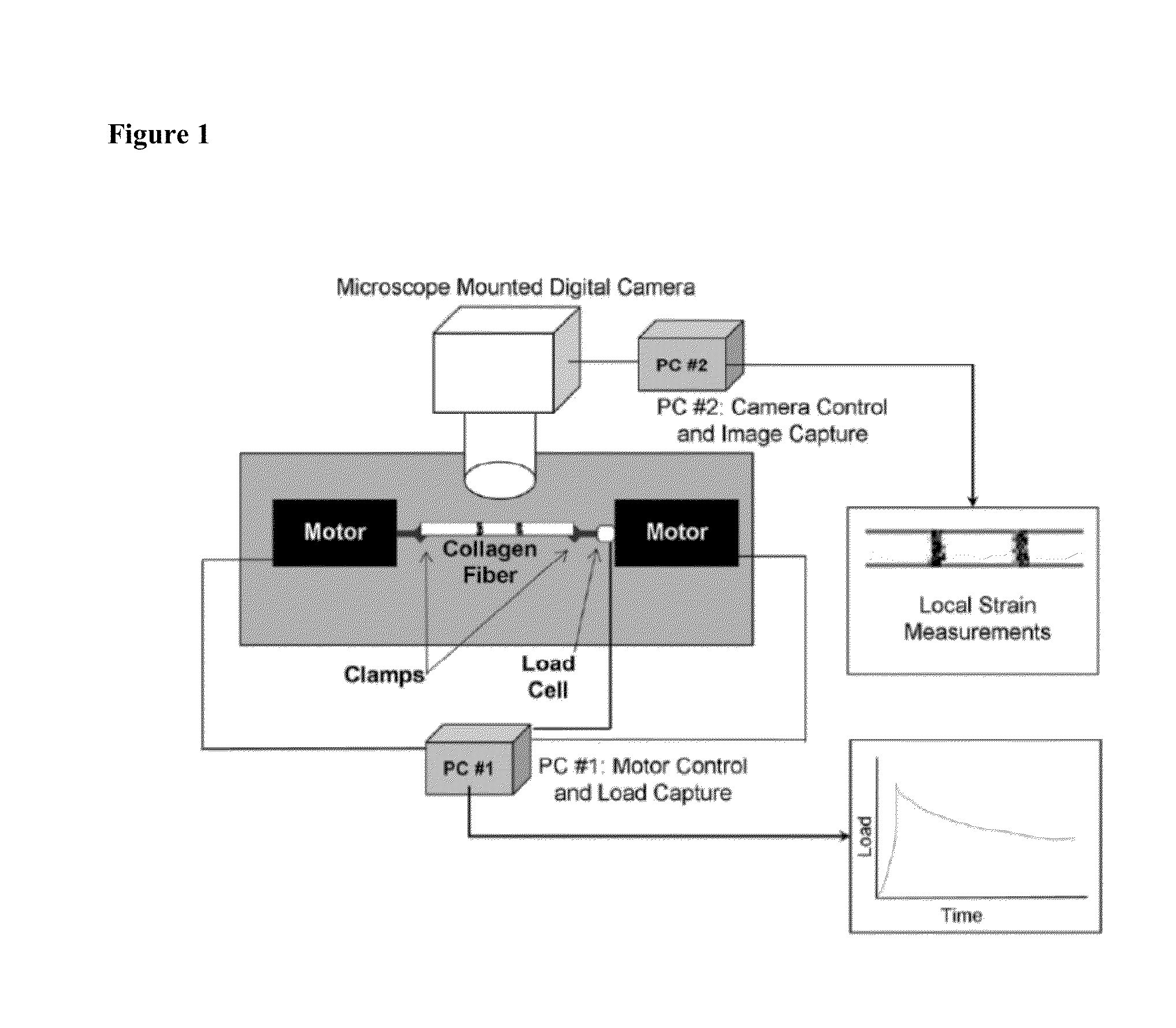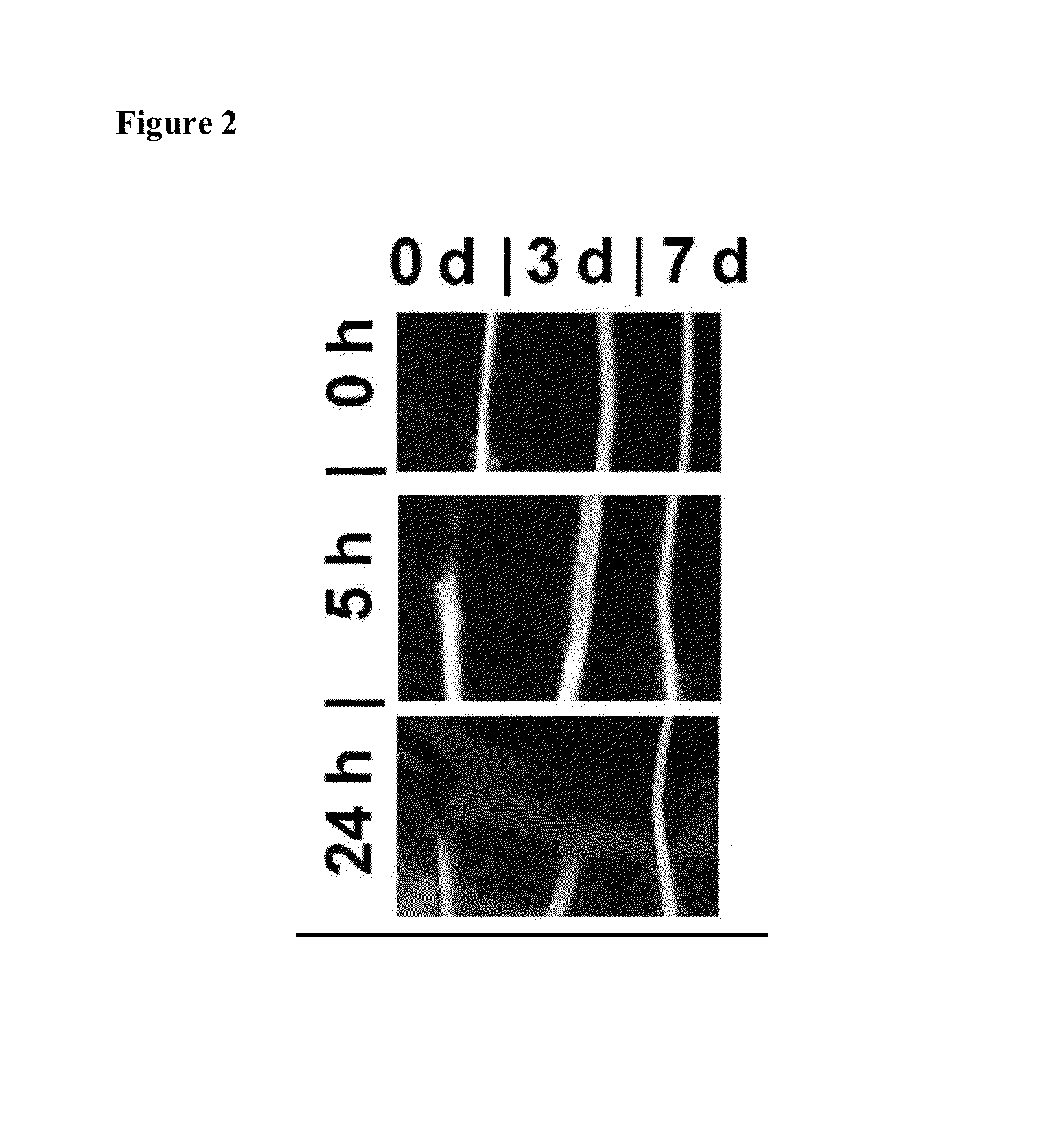Glycation Cross-link Breakers to Increase Resistance to Enzymatic Degradation
a cross-link breaker and enzymatic degradation technology, applied in the direction of immunoglobulins, peptides/protein ingredients, peptides, etc., to achieve the effect of accelerating enzymatic degradation and better protecting or stabilizing collagenous tissues
- Summary
- Abstract
- Description
- Claims
- Application Information
AI Technical Summary
Benefits of technology
Problems solved by technology
Method used
Image
Examples
example 1
Experimental Procedures
Chemicals
[0191]Dulbecco's PBS with calcium (CaCl2, 0.133 mg / ml) and magnesium (MgCl2, 0.1 mg / ml) and D-Ribose (99% pure) was purchased from Sigma-Aldrich (St. Louis, Mo.), 10× concentrated PBS from Invitrogen (Carlsbad, Calif.), and thymol crystals were from Fisher Chemical Company (Fair Lawn, N.J.). Type II bacterial collagenase (CLS-2, purified from Clostridium histolyticum with reported activity of 245 units / mg dry weight) was purchased from Worthington Biochemical Company (Lakewood, N.J.).
Rat Tail Tendon Collection and Glycation
[0192]Rat tails were collected from 6 month old Lewis rats euthanized for unrelated studies in accordance with institutional animal care and use committee approved procedures. Tails were sectioned between the proximal caudal vertebrae and freeze-thawed twice to decellularize the tissue, then stored at −80° C. until tendons were harvested. To collect tendon fibers the tails were first thawed at room temperature for approximately 60 m...
example 2
Results of the Unloaded Fiber Enzyme Susceptibility Test
[0201]Tendon microfibers were tested for susceptibility to enzymatic degradation in an unloaded state by observing fiber digestion to dissolution over an approximate 24 hour period as described in Example 1. Comparable diameter tendon microfibers were obtained from the same animal tail and treated with 0.2 M ribose for 0, 3 or 7 days and then incubated unloaded in bacterial collagenase. Representative images at the air—collagenase interface of the fibers were digitally recorded at the 0 hours (start) and after 5 and 25 hours of collagenase exposure.
[0202]In all 3 tests, the 0-day non-glycated fiber degraded and dissolved fastest, followed by the 3-day glycated fiber. The 7-day glycated fiber showed no visible degradation after prolonged enzyme exposure.
[0203]Representative results from one experiment are shown in FIG. 2. In these results, the 0-day non-glycated (native, no cross-linking) fiber dissolved after approximately 5 ho...
example 3
Results of Tensile Strain at Equilibrium
[0204]Previous mechanical relaxation tests using native non-glycated rat tail tendon microfibers have shown an unusual increase in the tensile strain between the end of loading (peak strain) and stress relaxation (equilibrium strain) of the tissue. Therefore, the mechanical relaxation strain response between native and cross-linked tissue was compared.
[0205]The peak and equilibrium strains from the mechanical relaxation tests for the glycation cross-linked fibers as described in Examples 1 and 2 (triangles) were compared to historical data for native fibers (squares) from our previous study (Wyatt Bourne and Torzilli 2009). The peak and equilibrium strains were plotted and the relationship between them was fit with a linear regression model (regression+95% confidence intervals as solid and dotted lines respectively) using SigmaPlot 10 software (Systat Software, Inc., Chicago, Ill.).
[0206]Analysis of the peak and equilibrium strains for the 3-d...
PUM
| Property | Measurement | Unit |
|---|---|---|
| Electrical resistance | aaaaa | aaaaa |
Abstract
Description
Claims
Application Information
 Login to View More
Login to View More - R&D
- Intellectual Property
- Life Sciences
- Materials
- Tech Scout
- Unparalleled Data Quality
- Higher Quality Content
- 60% Fewer Hallucinations
Browse by: Latest US Patents, China's latest patents, Technical Efficacy Thesaurus, Application Domain, Technology Topic, Popular Technical Reports.
© 2025 PatSnap. All rights reserved.Legal|Privacy policy|Modern Slavery Act Transparency Statement|Sitemap|About US| Contact US: help@patsnap.com



